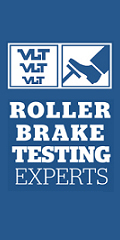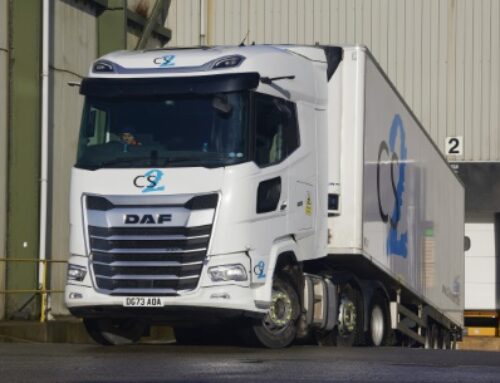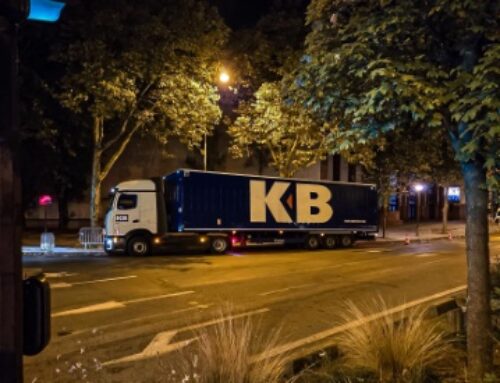Euro 6 drove truck market down nearly 30% in 2014
 The hangover from 2013’s last-minute, Euro 6-fuelled boom is being blamed by truck manufacturers for the near collapse in sales of new trucks last year.
The hangover from 2013’s last-minute, Euro 6-fuelled boom is being blamed by truck manufacturers for the near collapse in sales of new trucks last year.
While registrations of vans up to 3.5 tonnes, unaffected by the legislation, soared by 18.7 per cent to nearly 321,000 in 2014, registrations of trucks from 6.01 tonnes upwards fell by nearly 30 per cent to 34,672, according to figures from the Society of Motor Manufacturers and Traders.
Registrations of new trucks spiked sharply in December 2013, giving a yearly total of 49,430 as customers sought to beat the Euro 6 deadline. This included many new Euro 5 trucks that were not actually put on the road until the following year, damping demand for new vehicles particularly during the first half of 2014.
Market leader DAF, third place Scania, and fifth place MAN all lost over 30 per cent volume. However, DAF still held nearly 25 per cent of the market. Second-place Mercedes scored just under 19 per cent market share, Scania 13.7 per cent, its Swedish compatriot Volvo 11.8 per cent, MAN 9.8 per cent and Iveco 8.3 per cent – while Renault Trucks’ new ranges, launched with a flourish at the start of the year, did boost its market share from 5.1 to 5.9 per cent.
Isuzu, whose offerings are in the sub-12-tonnes bracket, was the only truck marque to actually increase volume in 2014. It registered 932 new trucks, a 3.1 increase in volumes from 2013. Rival Fuso saw registrations drop by 11.7 per cent, while public sector cutbacks took the wind out of dustcart manufacturer Dennis Eagle’s sales, which fell 40.3 per cent to 580. Hino fell 17.8 per cent to 134 trucks while ‘others’ – mostly specialist chassis imported for conversion – fell 55.6 per cent to 40.
Turning to the various individual sectors, registrations of 7.5-tonners fell by 40 per cent to 4,556. Japanese makers Isuzu and Hino managed to increase their volumes, and the Japanese-designed trucks have become an increasingly significant force in the sector at the expense particularly of the German makes Mercedes and MAN as operators’ choice is increasingly influenced by payload.
Registrations of two-axle rigids of over 15 tonnes fell by over 25 per cent, with Renault Trucks and Scania taking most of the pain. Iveco did well to hold on to all but two per cent of its volume: as with the 7.5-tonne segment, the Iveco SCR-only approach to Euro 6 has helped it to win urban distribution business from its rivals.
DAF’s volume fell in the multi-axle rigids sector by 42 per cent as it was displaced at the top by Scania. Volvo was the only manufacturer to manage even a marginal increase in volume in this sector, thanks to a good performance from its construction trucks.
A big influence in the tractor market this year was the collapse in demand for 4×2 chassis as supermarket business dried up. Demand for two-axle tractors fell by over 41 per cent in a sector that was 31 per cent down.
Unsurprisingly, although its volumes were down 14 per cent, Mercedes maintained leadership of this sector and boosted its share to over 25 per cent. All other manufacturers, with the exception of Renault Trucks, experienced falls in volume of over 30 per cent.
DAF Trucks managing director Ray Ashworth explained that 2014’s dramatic market downturn had been driven by the introduction of Euro 6, claiming that 6,000 trucks had been purchased in 2013 to replace older models which normally would have continued in service until 2014.
 “But by the second half of 2014 prices had stabilised. It was apparent that Euro 6 trucks were around three per cent better on fuel than their predecessors, the technology had been accepted, and residual values for Euro 6 trucks were predicted as being 10 per cent better than Euro 5 by the respected independent CAP trade price guide.
“But by the second half of 2014 prices had stabilised. It was apparent that Euro 6 trucks were around three per cent better on fuel than their predecessors, the technology had been accepted, and residual values for Euro 6 trucks were predicted as being 10 per cent better than Euro 5 by the respected independent CAP trade price guide.
“DAF took 50 per cent more orders in the second half of 2014 than it did in the first, and things were back to normal by the end of the year.”
Ashworth postulated that the ‘new normal’ for the post-2008 truck market was 42,000 a year – which was the average of registrations for the past two years.
He thought that this might be achieved this year, but predicted that 40,000 was more likely, thanks to the poor economic performance of the rest of Europe possibly damping the UK economy down.
“DAF will sell 11,250 trucks this year,” he predicted. “Build slots for the LF are already booked out for 12 weeks.”
Iveco marketing director Ian Lumsden pointed out that the construction sector had led the recovery in demand for new trucks, and there was core demand for the largest, most efficient trucks.
“More three-axle tractors have been registered in the last three years than at any time ever in history,” he said.
Like Ashworth at DAF, Lumsden is confident that the market has now accepted that Euro 6 trucks are more economical than their predecessors.
The view from Iveco is pretty much in alignment with the view from DAF: the market would be likely to finish 2015 with some 40,000 to 41,000 new trucks registered.












